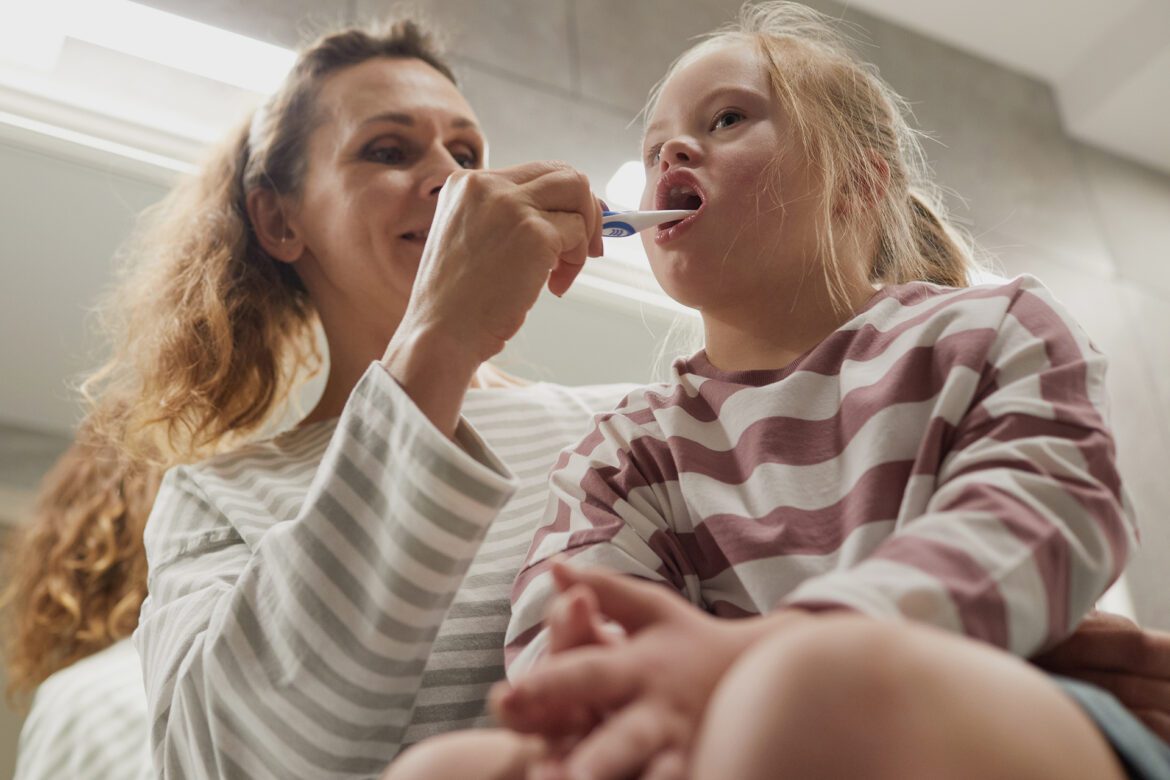957
Teaching everyday activities
Simple daily activities such as brushing your teeth, getting dressed and eating may feel challenging for your child. Helping to boost your child’s confidence to carry out these routine activities and chores can help them become more self-reliant.
Let your child know that it is okay to make mistakes and to never be afraid to ask questions or ask for help, however frustrated they may feel.
Take things slowly, one day at a time. Let your child try out different skills and activities. It is essential to focus first on completing a given activity, even if it is not done perfectly, as this will help build your child’s confidence.
Here are some ways you can work learning into everyday activities.
Getting dressed
- Put your child’s clothing away in a set place. This is especially crucial for children with visual impairments. This way they can easily find things they need.
- Choose clothing that is easy to put on and take off, such as clothing with zippers, Velcro or large buttons and clothes that have obvious fronts and backs. Collars, logos, fastenings and labels help in identifying the front and back of clothes.
- As your child gets older, help them identify different clothing they need for different occasions or activities (school uniforms, night suits, etc). Help them to understand the purpose or need to dress up differently for separate occasions. Before dressing up, ask questions like, “You are going to school. What should you wear?.”
- Many parents say teaching their child to tie their shoelaces is the toughest. If your child is interested to learn, you can use your hand to guide your child’s hand and together go over each step slowly. Be patient and they will catch on soon.
- There are many fun ways to help your child learn to wear shoes. For instance, you can paint or print each half of an animal on either shoe. Or colour code them. Your child can learn to match the correct shoe by putting the pictures together or matching the colours.
Bath time
- Water can be terrifying for some children. If your child is afraid of water, let them touch the water in a mug first and ask, “Is your hand touching the water?.” Then put some water on the child’s back while telling them what you are doing, “I am putting water on your back.”
- Know how your child likes their bath water temperatures. Another way to make bath time fun is by bringing along their favourite toys. Familiar faces and objects will help them feel comfortable.
- Bath time is also an excellent opportunity to help your child recognize and learn about body parts. Point to different body parts and name them while bathing and drying the child. This way should there be a need, your child will be able to describe where he or she feels discomfort.
Oral hygiene
- Introduce the idea of brushing teeth by encouraging your child to imitate you or others in the house brushing, rinsing, and spitting as a fun activity. Give your child ample time to learn the basics and praise their efforts.
- Brush together, play songs, and buy the toothpaste flavour your child loves. All these will keep the experience positive and encouraging.
- Once your child finishes brushing, you can step in and brush your child’s teeth as well, if needed, to ensure all the teeth are brushed properly. This support can be reduced gradually as your child learns to brush properly on their own.
- Gently hold your child’s neck as she/he bends to spit so that they do not swallow the toothpaste. Show your child the proper way to rinse their mouth in the sink.
- Showing oral hygiene videos, especially if there is one starring their favourite characters, can also motivate your child to brush correctly and consistently.

